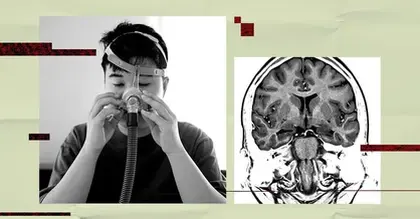
- Aging and limited physical activity, as well as the use of novel weight loss drugs such as Wegovy and Zepbound, often lead to the simultaneous loss of muscle mass and bone density.
- Medications are currently available for bone loss, but approved treatments for muscle mass loss are lacking.
- A new study in mice shows that the antibody treatment bimagrumab can simultaneously prevent a decline in bone density along with muscle mass.
- These findings suggest that bimagrumab could be potentially used to alleviate bone and muscle loss due to GLP-1 drugs or aging.
Studies suggest that weight loss induced by glucagon-like peptide-1 (GLP-1) drugs can also cause a decline in
A new study published in the
These findings suggest that bimagrumab could potentially help preserve not only muscle mass, as shown by previous research, but also help prevent bone loss in individuals using GLP-1 drugs for weight loss.
The study’s author, Frederik Duch Bromer, a researcher at Aarhus University, Denmark, said, “Since the rise of incretin therapies like Wegovy and Mounjaro, scientists have been searching for ways to counteract the loss of muscle and bone mass often accompanying rapid weight loss. Our research shows that bimagrumab can mitigate even more severe muscle and bone loss than what typically occurs with weight loss therapies.”
“As bimagrumab is now being repurposed to help preserve lean mass during weight loss, its ability to protect bone as well is especially relevant given the large number of people using these treatments,” Bromer told Medical News Today.
A loss of muscle mass and a decline in bone density are common features of aging that often occur together. The loss of muscle mass and strength with aging is referred to as sarcopenia, whereas the decrease in bone mass and bone mineral density is referred to as
While medications are available for the treatment of osteoporosis, there is a lack of approved treatments for muscle loss. One of the categories of drugs currently under investigation for the treatment of muscle loss includes drugs that inhibit the activation of the activin receptor or the signaling pathway activated by this receptor.
Inhibition of the activin signaling pathway leads to increased muscle mass and bone formation and enhanced blood cell formation. The antibody bimagrumab is an example of one such drug that binds to the activin receptors to inhibit the activation of the activin signaling pathway. Similar to other inhibitors of the activin signaling pathway, animal and clinical studies have shown that bimagrumab can increase muscle mass and lean body mass.
The use of GLP-1 receptor agonists is associated with
Bones and muscles not only cooperate with each other during movements, but muscles also release small proteins called myokines that impact bone health. However, it is not known whether bimagrumab can also simultaneously improve bone health along with increasing muscle mass.
In the present study, researchers examined whether bimagrumab could improve bone health and increase muscle mass simultaneously.
The inhibitors of the activin signaling pathway can also lead to an increase in blood cell production and potentially increase the risk of blood clots. Hence, it is essential to assess the risk of blood clots due to bimagrumab before it can be considered for preventing muscle and bone loss.
In the present study, the researchers assessed the impact of bimagrumab on muscle and bone mass in Healthy and immobilized mice, with the latter serving as a model of bone and muscle loss.
To simulate the simultaneous loss of muscle mass and bone density, the researchers injected a group of mice with botulinum toxin into the quadriceps and the gastrocnemius, the major muscles of the hindlimb. The botulinum toxin causes paralysis of the hindlimb muscles, resulting in immobilization of the animal, followed by muscle mass loss and a decline in bone density.
The healthy and immobilized mice in the bimagrumab group received two weekly antibody injections over 21 days, whereas those in the control groups received an injection of the vehicle. After 21 days, the mice in all groups were euthanized, and the muscles and bones in the right hindlimb were removed and evaluated.
The researchers found that bimagrumab increased muscle mass, the size of muscle fibers, and bone mineral density in the hindlimb of both free-moving and immobilized mice. Bimagrumab also promoted new bone formation, including at the end of the thigh bone or femur, which is prone to fracture in older individuals.
The scientists observed that the increase in muscle mass and bone mineral density was smaller in the immobilized mice, likely due to the potent action of botulinum toxin. Yet, these results demonstrate that bimagrumab could potentially help increase muscle mass and bone density in individuals at risk of sarcopenia and osteoporosis.
The researchers also examined the impact of bimagrumab on blood cell formation at two and seven days after the injection of the antibody. Bimagrumab did not have an impact on blood cell formation or any other related factors, suggesting its safety for preserving muscle and bone mass in patients using GLP-1 drugs.
However, more research and larger clinical trials will be needed to determine its effectiveness and safety.
“While our study focused on a model of muscle and bone loss, it did not specifically examine bone loss related to obesity. Since weight loss drugs are mainly used by people with obesity, it is essential to explore how bimagrumab interacts with bone affected by obesity,” Bromer added.





